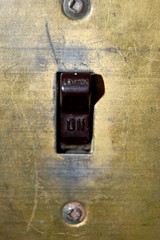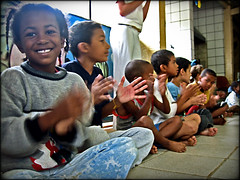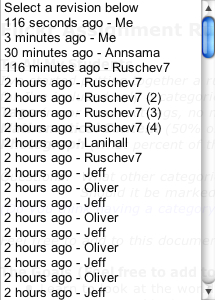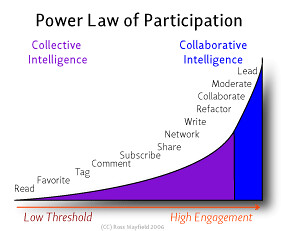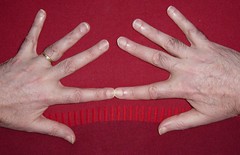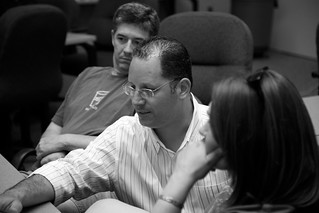This was an interesting exercise, interesting (to me) to see how my interests have evolved over the past year. I am writing more this year than I did last year. The past two years have seen quantum leaps in my thinking and pedagogy. I'm starting to feel like I've passed the inflection point though ... I feel like it's slowing down. We'll see what 2007 has in store.
Anyway, here's my personal list of favourites from 2006:
January
Why did you start blogging with your classes ....
The title says it all.February
Paying it Forward
A student graduates from my Grade 11 (blogging) class and takes it upon himself to mentor younger students at one of our feeder schools. Chris Harbeck and Dave Reece had just started blogging with their grades 8 and 7 classes.March
Resonance and Dissonance
Some kids in my classes love the blog, others don't. Different learners have different learning modalties and needs.April
Wiki Solution Manuals
I always tell my classes; "Learning is a conversation. If you're not talking to somebody about it, you're not learning it." I seeded a wiki with problems from every unit in the course. Then built an assignment around it to accomplish several learning goals.May
Talking to Student Teachers in Virgina
Sheryl and I were talking about having one or more of her student teachers mentor my classes via the class blogs. The conversation took something of a different tack -- they asked really good questions. I really enjoyed the opportunity to talk to the student teachers.June
The Next Movement
A reflection on how my use of online tools in the classroom has evolved over three semesters. I have found it really beneficial, for my own growth, to do this sort of reflection at the end of every semester. It's this sort of reflection that first drew me towards writing my own blog. I'll probably do another one of these in February 2007.July
Marco Torres Keynote @ BLC 2006
My first time ever at Alan November's Building Learning Communities Conference in Boston. (I've been invited back for 2007.) I had planned to write three posts like this, one for each keynote presentation, but the summer got away from me -- my daughter was born (#3) and we were having renovations done on the house. Marco's presentation was one of the best. I still think about it a lot. I keep coming back to the same question. Is this pedagogy transferable, scalable and sustainable or is it possible only for someone with Marco's talent and skill set?August
Won't Be Fooled Again ...
My first post about exercising digital literacy and verifying sources on the net. My most recent post on this issue seems to have stirred up a bit of a hornets nest.September
Did you know? - The Winnipeg Remix
Thanks to Karl Fisch for creating such a powerful presentation and putting such a liberal copyright on it. This allowed me to remix and personalize it a bit for my students. I began all my classes this year by showing them this video. I have also shown it to teachers in workshops I have given that have anything to do with teaching and learning in the 21st century.November
What Does Success Look Like?
My wife and I took issue with the way our son was assessed on a major project in his class. This led to me reflecting on how to improve the learning for students in my classes.December
Flickr Assignment Rubric - in progress
The second to last in a series of posts about the use of linking, tagging, RSS, Google Docs and flickr to create a meaningful assignment for my math classes. What I liked best about this post in the series is the way it illustrates the students thinking and contributions to creating the criteria by which they will be assessed.
Stealing a line from Ewan: "Feel free to go back and read these, leave some comments months on or simply just let me indulge myself as I reflect on a year gone by." ;-)
Happy new year!
- 12/30/2006 01:52:00 pm
- 1 Comments

